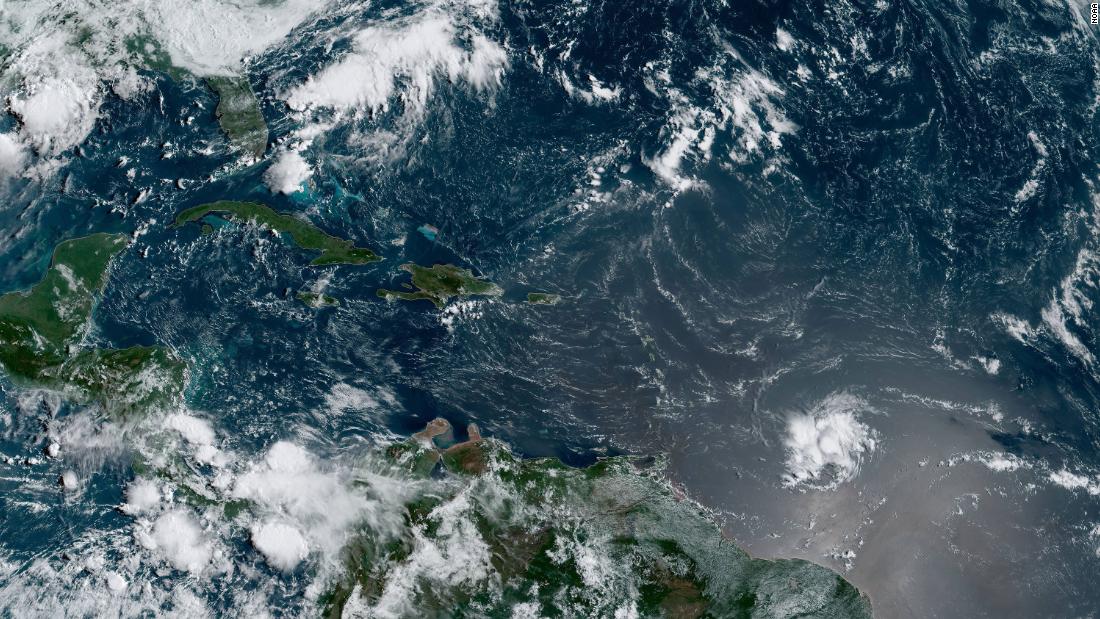[ad_1]
In addition, watches and warnings for the Windward and Leeward Islands probably will be required later today, and Puerto Rico and Hispaniola should monitor the storm’s progress, the National Hurricane Center said.
With maximum sustained winds of almost 40 mph, Dorian is moving west at almost 13 mph. It is expected to continue that way Sunday and then move west-northwest on Monday and Tuesday, the NHC said.
Wind shear and dry air are limiting the storm’s ability to organize and strengthen. But as Dorian moves into warmer waters, a weaker wind shear will allow it to strengthen over the coming days.
The tropical storm could develop into a Category 1 hurricane, which means winds between 74 and 95 mph, overnight Tuesday into Wednesday.
The cone of probability that shows Dorian’s expected path takes it just west of Puerto Rico. That still would affect the island but be less damaging than a direct hit.
Puerto Rico braces itself
With the disturbing memories of Hurricane Maria still fresh in people’s minds, Puerto Ricans flocked to stores to buy water, food and other supplies for the coming storm.
Wilfredo Díaz Rosado posted video and images of long lines and empty shelves at Costco and Sam’s Club stores in Puerto Rico.
Krystle Rivera tweeted images showing people with full carts of water at Sam’s Club on Sunday morning.
“Thankfully I’ve been preparing since May we’ve been stockings up on water and can good(s) and gas for the generator. I actually went to get snacks for my daughter(‘s) school!”
The line for water stretched from the entrance to the back storage area, she said.
That is because conditions in the tropics become prime for storm development. Typically, by the end of August, waters in the tropics have warmed in many places to at least the mid-80s. Also, wind shear across the Atlantic starts to weaken, allowing for storms to develop.
CNN’s Robert Shackelford contributed to this report.
[ad_2]
Source link


